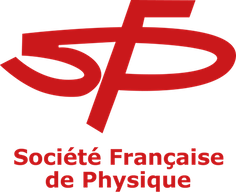Orateur
Description
Now that the global LIGO-Virgo network has successfully detected gravitational waves from compact binary coalescences, a key challenge is to improve the detector sensitivity in order to detect more transient sources — weaker or located further away. The detectors' sensitivity can be enhanced by increasing the laser power travelling within the arm cavities, for it reduces the effect of the laser quantum phase noise, which is the fundamental noise that dominates the sensitivity in the high-frequency range (above a few hundreds of Hz). However, a nonlinear optomechanical phenomenon that has long been studied, and which is called parametric instabilities (PI), may limit the amount of energy stored in the Fabry-Perot resonator, and thus the laser power.
PI comes from the coupling of three modes: a mirror mechanical mode (MM) that sets the mirror surface in motion, the fundamental optical mode of an optical cavity (TEM00), and a higher order optical mode (HOM). Photons scattering from the TEM00 to a HOM can generate an optical beat note if the difference in frequencies of the two optical modes is equal to the MM resonance frequency. This beat note, in turn, can either damp or increase the mechanical motion via radiation pressure. The latter effect could lead to an excitation, that is to say, first exponentially growing, and then reaches a plateau after some time. The signal associated with this mirror excitation would be aliasing in the detection band, thus saturating the electronics.
In 2015, during the Observing Run 1 (O1), LIGO observed PIs when a mirror mechanical mode at 15 kHz became unstable, for an intracavity power of 50 kW. That is why we are investigating possible PIs in Virgo. In our simulations, we vary several parameters to include measurement uncertainties and possible deviations between the nominal configuration of the detector and the actual one. Current results show that, with an intracavity power of 160 kW (nominal value for the Observation Run 3, currently ongoing) and all mechanical mode quality factors equal to 10^7, one could get up to a few tens of unstable modes, depending on the mirror radii of curvature. Lower quality factors (in agreement with measurements in situ) should allow Virgo not to face any PI for the time being -- and indeed none has been observed so far.

